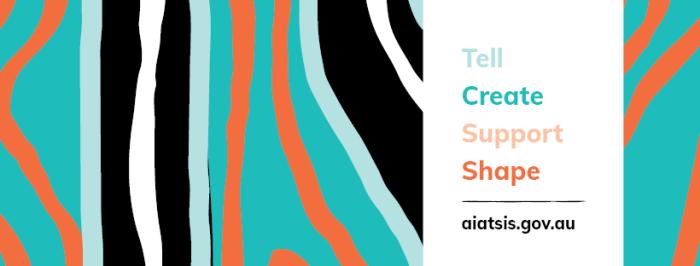Australian Institute of Aboriginal and Torres Strait Islander Studies | AIATSIS |

Explore Aboriginal and Torres Strait Islander Australia.
Engage with the oldest surviving culture in the world. Cultures that are ancient and living.
AIATSIS is Australia's only national institution focused exclusively on First Nations Australia.
Welcome to Country
It is important that those who are on the traditional lands of Australia's First Peoples are right-minded and cleansed. Learn about the significance of Country and the difference between a Welcome to Country and an Acknowledgment of Country.
My voice for my country
Explore the history of Aboriginal and Torres Strait Islander voter participation.
Pretty Little Lines - Jimmie Barker Sound Pioneer
Muruwari man Jimmie Barker (1900-1972) was the first known Aboriginal person to independently use recorded sound as a tool for preserving and documenting Aboriginal culture.
The Marlaloo songline
Ancient songlines criss-cross the continent and link people, places and practice. By singing the songlines, Elders evoke the ancient stories of Country.
Two Snakes, Mervyn Street
Senior Gooniyandi Elder Mervyn Street shares his grandmother's and mother's songline story that traverses Gooniyandi Country in the Kimberley region of Western Australia.
Aboriginal astronomy
Aboriginal and Torres Strait Islander peoples have been observing the skies for millennia. It is where ancestral beings exist and observe. It is both a map and guide to navigation, seasons and cultural practice.
Art and authenticity
Aboriginal and Torres Strait Islander art is an expression of people's identity, culture, spirituality and relationships to Country. It tells stories of ceremony and Creation and connects people to ancestors and kin. Learn about what you can do to support its ethical trade.
Popular stories
Languages alive
In Australia there are more than 250 Indigenous languages including 800 dialects. Each language is unique to a particular place and people.
The Stolen Generations
Since colonisation, numerous government laws, policies and practices resulted in the forced removal of generations of Aboriginal and Torres Strait Islander children from their families and communities across Australia.
Eddie Koiki Mabo
Eddie Koiki Mabo led a landmark legal case that succeeded in overturning the fiction of terra nullius - land belonging to no one'. What motivated Mabo to take on a ten-year legal challenge?
A map of diversity
The AIATSIS map is a visual reminder of the richness and diversity of Aboriginal and Torres Strait Islander Australia.
The Aboriginal Flag
The Aboriginal flag was designed by Luritja artist Harold Thomas.
Land rights
Aboriginal and Torres Strait Islander peoples have occupied the lands and waters of Australia for millennia. Since the beginning of colonisation, Australia's First peoples have defended their lands and waters and asserted their rights to their homelands. Learn about a few of the historical moments of the land rights movement in Australia.
Australia's First Peoples
Aboriginal and Torres Strait Islander peoples are the first peoples of Australia with many different and distinct groups, each with their own culture, language, beliefs and practices. It is because of this diversity that Aboriginal and Torres Strait Islander peoples identify in lots of different ways.
Missions, stations and reserves
In the nineteenth and twentieth centuries, many First Australians were forced from their Country and on to missions, reserves or stations. Broadly speaking, there were three types of spaces set aside by different governments specifically for Aboriginal people to live on: missions, stations and reserves.
Exemption: the high price for freedom
Most people have heard of the Stolen Generations and its impacts. But few know about another equally insidious policy that has also inflicted harm across many generations. This policy was called Aboriginal Exemption.
Not just a spot on the landscape
For many Australians, heritage often means old buildings, our nation's many national parks or the places that make Australia special. For Aboriginal and Torres Strait Islander peoples, heritage is a part of your identity.
Serving their country
Thousands of Aboriginal and Torres Strait Islander peoples have served in the Australian Defence Forces since the 1860s and possibly earlier. At least 1000 Indigenous Australians served in the First World War.
Singing the train
Aboriginal and Torres Strait Islander songs have told the stories of the land as it changed over thousands of years, transforming into ranges, rivers and water holes. They have sung into being people's culture and their connection to country as a living thing.
Fishing
Aboriginal and Torres Strait Islander peoples have been living sustainably off their waters for thousands of years. Fishing is both sustenance and cultural practice informed by ecological knowledge.
Didjeridu
The didjeridu is for many Australians an iconic symbol of Aboriginal Australia. The first didjeridus were made from bamboo and are thought to have originated from the northwest region of the Northern Territory / Western Australian border.
Brilliant Australians
David Ngunaitponi (Unaipon)
Have you ever looked at the Australian $50 note and wondered about the dignified man that peers pensively into the distance? Why is he looking so thoughtful? What was so special about him that he has been immortalised on our currency?
William 'Bill' Ferguson
William Ferguson founded the Aboriginal Progressive Association and led protests at the 1938 National Day of Mourning. He would become one of the most famous and important Aboriginal rights activists in Australian history.
Henry 'Seaman' Dan
Henry Gibson Dan or Seaman Dan as he was affectionately known, was the ripe age of seventy when he released his first album with music producer, Karl Neuenfeldt. Undoubtedly Australia's oldest gigging' musician and recording artist, Seaman Dan continued to delight audiences well into his eighties.
Laurie Baymarrwaŋa
Laurie Baymarrwaŋa or Big Boss as she was affectionally known, was a senior Yolŋu leader who was instrumental in preserving the endangered Yan-nhaŋu language and its intimate ancestral knowledge.
Defining moments
The 1967 Referendum
On 27 May 1967, the majority of Australians voted 'Yes' to change the Constitution to remove two references that discriminated against Aboriginal and Torres Straits Islander peoples. It was one of the most successful national campaigns in Australia's history.
The 1965 Freedom Ride
In 1965, a group of students from the University of Sydney drew national and international attention to the appalling living conditions of Aboriginal people and the racism that was rife in New South Wales country towns. Known as the Freedom Ride, this 15-day bus journey through regional New South Wales would become a defining moment in Australian activism.
Day of Mourning
On January 26 1938, while many Australians celebrated the one hundred and fiftieth anniversary of the landing of the First Fleet, a group of Aboriginal men and women gathered at Australia Hall in Sydney.
Location
AIATSIS is located on Acton Peninsula in Canberra, adjacent to the National Museum of Australia. We are within walking or cycling distance from the city centre and the Australian National University.
Visitors can access our main entrance foyer and exhibition space, as well as search the AIATSIS Collection and conduct their own research in our Stanner Reading Room.
Physical address 51 Lawson Crescent, Acton Peninsula, Acton ACT 2601
Maraga
The AIATSIS building on Acton Peninsula was officially named Maraga in 2020.
AIATSIS consulted the United Ngunnawal Elders Council and the Winanggaay Ngunnawal Language Group who provided the building's name.
Maraga is a Ngunnawal word that means: strong and robust waddy shield, a tool of dual purpose offering the holder protection against the powerful waddy spear/club, and which can also be used as a coolamon to hold babies and carry food.
Opening hours
Our building, Maraga and reception desk is open 9:00am to 5:00pm, Monday to Friday. (excluding public holidays and the Christmas shutdown period)
Our Stanner Reading Room is open to the public 10.00am to 1.00pm, Monday to Friday. (excluding public holidays and the Christmas shutdown period)
Bookings to view and access material in the AIATSIS Collection are available between 9.30am to 4.30pm, Monday to Friday (excluding public holidays) and must be booked two weeks in advance.
Visiting and accessing the AIATSIS Collection
Appointments to visit and access material in the AIATSIS Collection are available between 9.30am to 4.30pm, Monday to Friday and must be booked two weeks in advance.
❊ Address ❊
⊜ 51 Lawson Crescent, Acton View Map
✆ Telephone: (02) 6246 1111
❊ More Information ❊
→
Update Page







